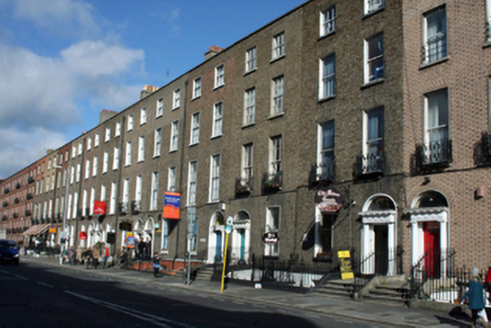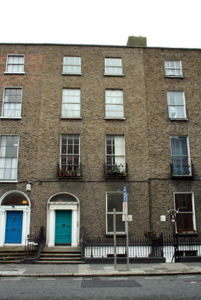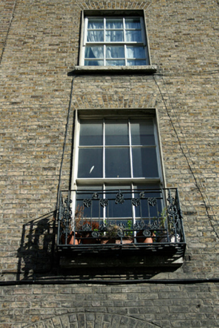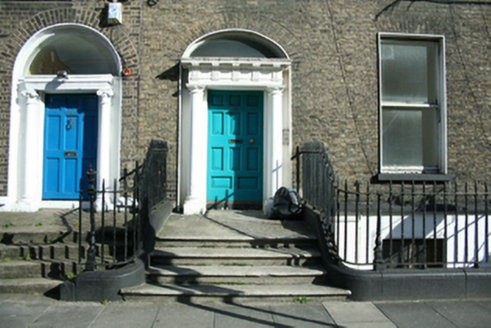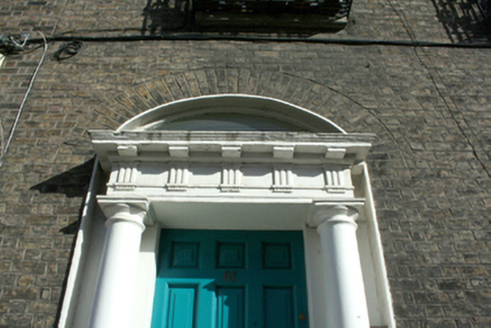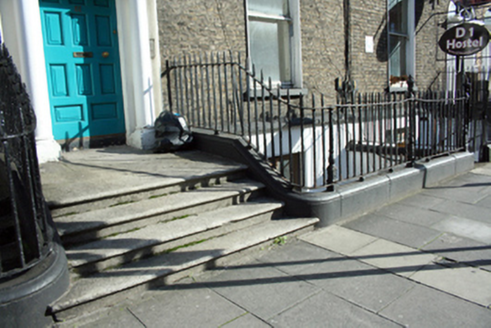Survey Data
Reg No
50010176
Rating
Regional
Categories of Special Interest
Architectural, Artistic
Original Use
House
In Use As
Apartment/flat (converted)
Date
1810 - 1830
Coordinates
316271, 234868
Date Recorded
18/10/2011
Date Updated
--/--/--
Description
Terraced two-bay four-storey house over raised basement, built c.1820, with three-storey rendered return to rear, now in use as flats. Pitched slate roof with hipped rear sections hidden behind parapet wall with squared granite coping. Rebuilt rendered chimneystack with clay pots to front and rear, along boundary with No. 80. Yellow brick walls laid in Flemish bond to painted, chamfered granite plinth course above rendered basement wall. Diminishing gauged flat-arched window openings with patent reveals, painted granite sills and replacement timber sliding sash windows, three-over-three pane to third floor, six-over-six to first and second floors, and single pane to ground floor. Fixed window to basement. Gauged round-headed brick door opening with patent reveals and painted masonry Doric doorcase flanking eleven-panel replacement painted timber door. Roman Doric columns on plinth blocks with frieze displaying alternating triglyphs and metopes having projecting masonry cornice over. Door opens onto granite platform and four bull-nosed granite steps bridging basement flanked by original wrought-iron railings on painted moulded granite plinth walls, curving to each side and returning to enclose basement area to south. Rendered walls to rear. Original stone mews structure to Mabbot Lane with altered façade, roof and interior.
Appraisal
Dating from the early nineteenth century, this house forms an integral component of Gardiner Street Lower, a significant streetscape in the north Georgian city. Gardiner Street Lower was developed by Gardiner in the late eighteenth century, with leases dating from the 1790s and formed part of Gardiner's route from Beresford Place to Mountjoy Square. The rhythm of the terrace is marked by the paired doorcases, repeated the length of the block. The Roman Doric doorcase is a somewhat unusual feature in Dublin, and matches those of Nos.74 to 80, which suggests that these houses were developed as a set. The curved granite plinths and railings framing the entrance are also of note: the railing curving to the north seems unresolved, and may indicate a change of plan, or a truncation of a particular builder's aspirations. The timber sash windows have been replaced sympathetically and the replacement door is a good replica of the Dublin eleven-panel type. The original mews structure survives on Mabbot Lane but has undergone considerable alterations.
